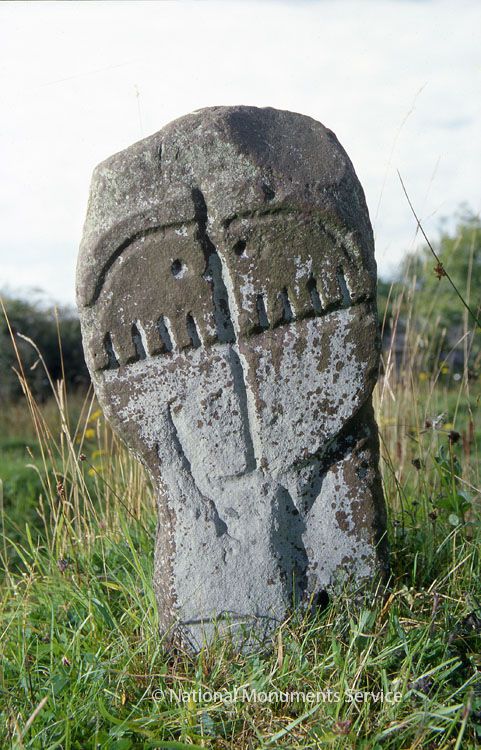Kilturra

Situated by the banks of a stream in low lying terrain is a varied group of monuments, testament to burial and ritual activity extending over millennia at Kilturra, County Sligo. This complex is located just off the Gorteen to Tobercurry road close to the county boundary with Roscommon, in a landscape of south Sligo traditionally associated with pipe, fiddle and flute playing.

Earliest amongst the small group is this wonderfully simple example of a stepped barrow. These are unusual types of barrow or earthen burial monument, rarely found, but distinctively different from other more common barrow forms. They can be found on their own in isolation, as one of a group of barrows, in barrow cemeteries, generally in low lying terrain and regularly close to the flowing waters of streams and rivers.
The Kilturra stepped barrow is just one of two in the county and one of fifty-two in the entire country. It consists of a low circular platform, with a low bank around its edge topped by a smaller platform defined by a scarp. Thus the monument displays the typical tiered profile of a stepped barrow. The overall diameter of the barrow is 22m so it is not a very large feature and part of its eastern edge has been eroded by the stream.
Other stepped barrows around the country can display an external fosse or ditch and some have outer banks as well. We don't yet have definitive evidence of what burial rites, or rituals, are associated with them. The evidence of stepped barrows in Britain indicates that cremated burials in pits or cists accompanied by pottery and personal ornaments are usually found within stepped barrows, often centrally placed, usually dating to the Bronze Age from 2500 BC to 750 BC. In Ireland barrows often cover both inhumations and cremation burials and the date range extends into and through the Iron Age to approximately 500 A.D.
The tradition of ritual activity established with the barrow was restored hundreds of years later when a u-shaped hollow was cut into the south east edge of the stepped barrow and utilised as a holy well. While the rituals associated with healing waters may have pagan origins, this holy well is associated with St Attracta (Naomh Adhracht), a County Sligo saint associated with hospitality and healing. While the hollow no longer holds much water, a short channel links the well to the nearby stream. For a period of time the patron of August the 11th was abolished, when in 1776 a faction fight occurred at the site and a man was killed. The tradition has been revived in more recent years. Around the perimeter of the well are a number of stone monuments, a millstone, a cross-slab and a pillar cross.

The cross-inscribed pillar is a short stone with a rounded head upon which is incised a cross-in-circle design which has an unusual composition. Four evenly spaced linear incisions, reminiscent of ogham strokes project from the upper edge of each arm of the cross. Two tiny circular depressions (diam. c. 15mm) flank the shaft of the cross within the upper half of the ring. These incisions read like a human face with 'eye-like' cupmarks at the top of the 'face' and 'teeth-like' indents below.
Crawford, H.S. 1913. A descriptive list of early cross-slabs and pillars. (cont.), Journal of the Royal Society of Antiquaries of Ireland 43, 151-69, 261-5, 326-34.
Egan, U., Byrne. E., Sleeman, M., Ronan, S. and Murphy, C. 2005. An Archaeological Inventory of County Sligo, Dublin Stationery Office.
Herity, M., Kelly, D. and Mattenberger, U. 1997. List of Early Christian cross-slabs in seven north-western counties. Journal of the Royal Society of Antiquaries of Ireland 127, 89-124.
Farrelly, J. and Keane, M. 2002. New barrow types identified in County Sligo. In M.A. Timoney (ed.), A celebration of Sligo: first essays for Sligo Field Club, 97-102. Sligo Field Club.
